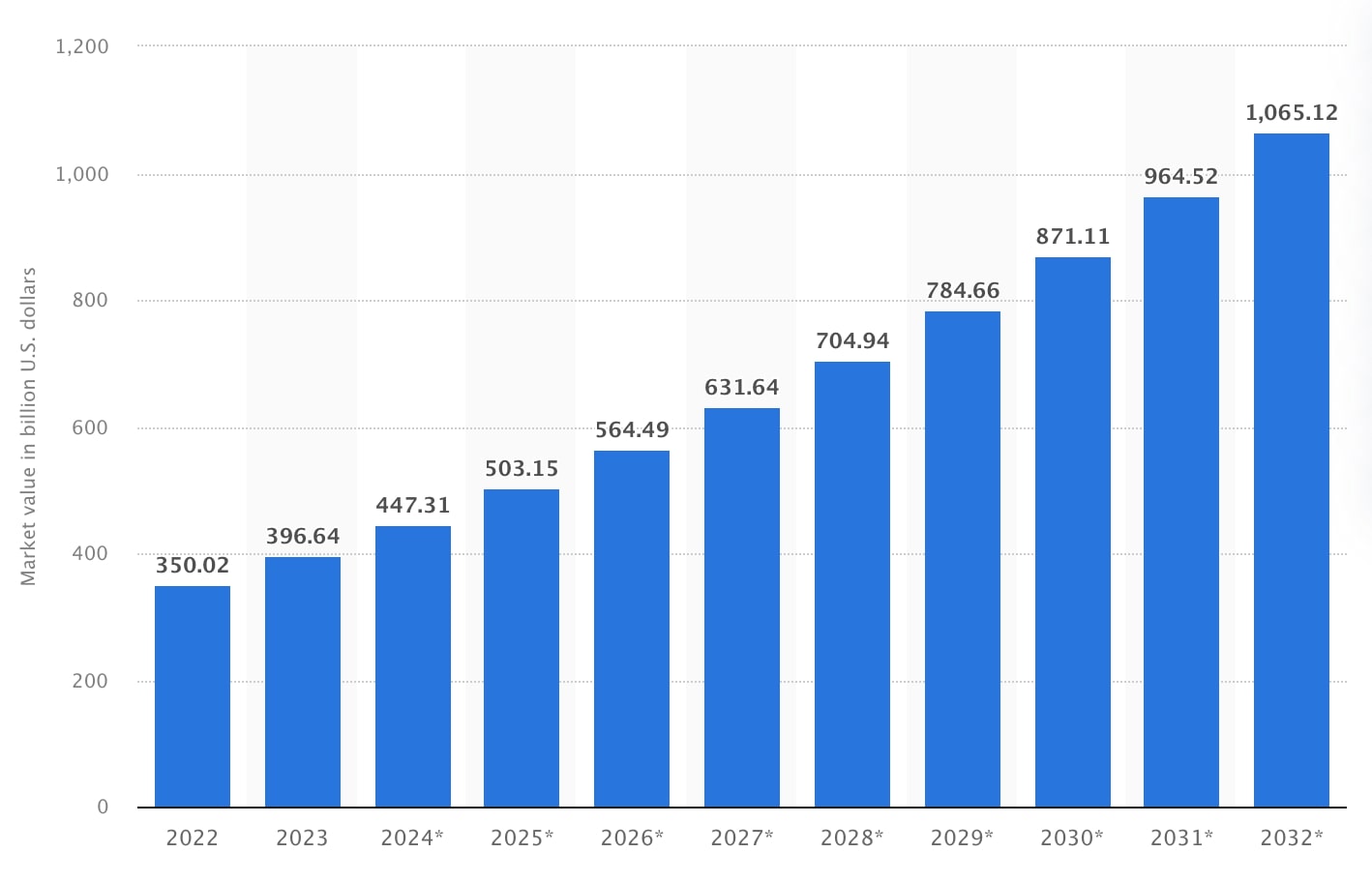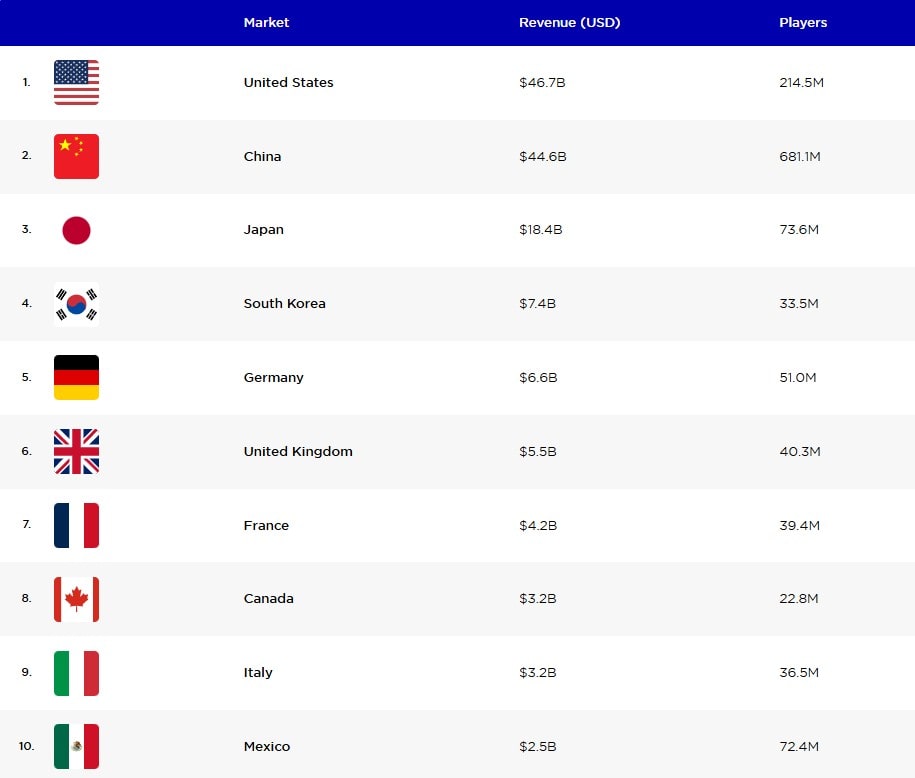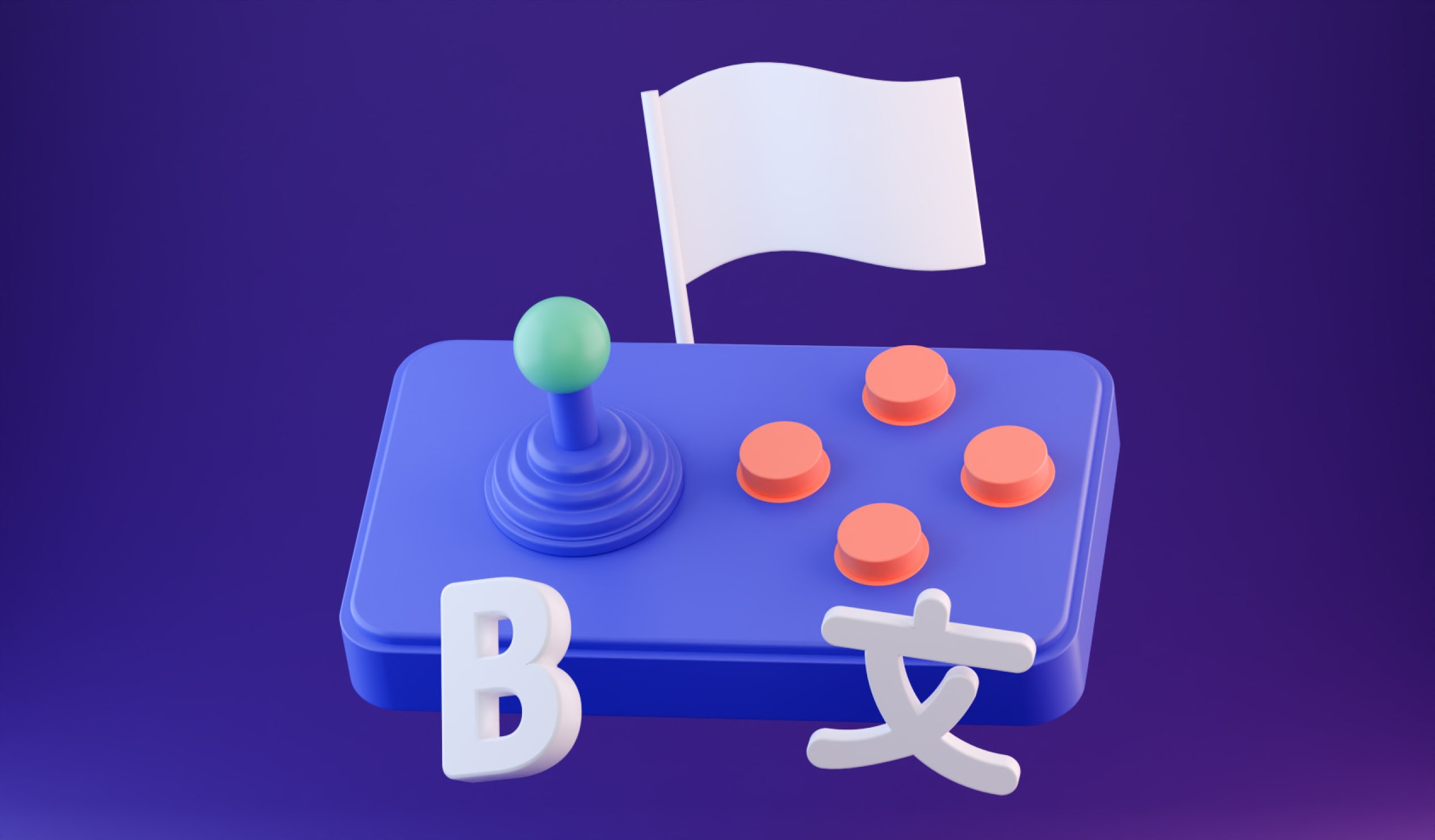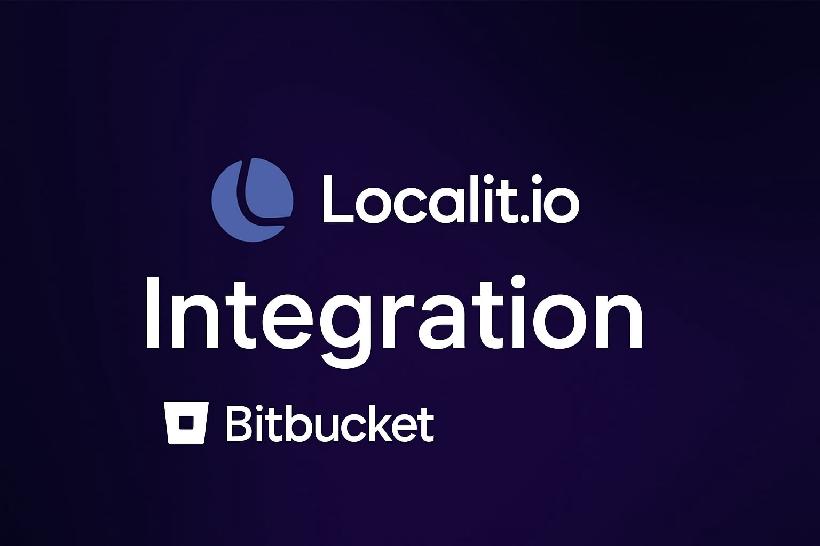The business of localizing your game is not a walk in a park, unfortunately. There are so many factors to consider, from who to hire to how best manage your marketing efforts. But perhaps the most challenging is to pick the languages you want to make your game available in. If you are a non-English speaking game studio, the decision is quite easy really: English is your best friend. But what's next?
Picking the right localization languages is a careful task that will determine your company's workload and resource allocation procedures in the future. But we are here to make the decision a little easier with the latest statistics, numbers, and trends in the world of gaming localization to make sure you will be on the right track when choosing game localization languages.
What is Game Localization?
Video game localization is all about making sure your game feels right to players everywhere. It’s not just translating words—it’s about capturing the vibe, humor, and flow that gamers expect. Imagine getting lost in a game’s storyline, only to stumble on awkward phrases or unclear instructions that will be confusing and possibly even progress hampering. Your players might even quit out of frustration and request a refund...
Gamers crave connection. Whether they’re saving a kingdom, solving puzzles, or crushing candies, they want to feel like the game was made for them. So, localization should hit the big stuff:
The user interface (UI) they interact with constantly.
NPC chatter that adds depth to the story.
Quest descriptions that keep players hooked.
Announcements that pop up mid-game.
Subtitles during epic cinematic moments.
Miss any of these, and the experience can feel awkward or even frustrating. But nail them as a developer, and your game becomes something people can’t put down. Whether your audience is die-hard RPG fans or someone sneaking in a few rounds after work, they all want the same thing: a smooth, fun escape—no weird language hiccups to pull them out of it.
So, yeah, localization isn’t just important—it’s essential to give gamers the immersive experience they came for.
Localize Your Game: Stats and Numbers
If you’re figuring out where to focus your game localization and translation efforts, two things really stand out: how much money people in a region can spend and how many people actually speak the language. It makes sense, right? The more people there are and the stronger the economy, the better your chances of reaching a big audience.
Take Icelandic, for example. Localizing into it might feel like a nice nod to gamers in Iceland, but with just around 300,000 speakers—and most of them fluent in English—it might not be the smartest move. It’s a lot of effort for a tiny slice of the pie.
To make smart decisions, you need solid data. Let’s take a closer look at some of the largest gaming markets and the languages spoken by the most people worldwide. It’s all about focusing where it counts.
Top Gaming Markets
The gaming industry is on the rise, having experienced a great boost during the COVID-19 pandemic and subsequent lockdowns around the world and being influenced further by the breakthrough AI developments. Globally, gaming is showing steady numbers, the game market is expected to double in value by the end of this decade and continue growing further.

Source: Statista
PC games, mobile games, or console ones, the difference is minimal here. What's important is that people are hungry for leisure and entertainment at their disposal at any given time of the day, which is just what you need to get your game noticed. Higher Internet penetration rates, increasing number of gamers, and the growing population worldwide spells success for game developers all over the world. But what regions should they focus on first? Let's take a look.

Source: Newzoo, 2023
The countries featured in the table are primarily located on three continents: North America, Asia, and Europe. So, here's your first clue on how to proceed with your localization process and translation of various parts of your game.
But that's not it, we can also provide a convenient table of players across different countries and their average spending on the gaming market (that includes online gaming).
| Country | Number of Gamers (millions) | Average Spending per Gamer (USD) |
|---|---|---|
| United States | 209 | 270 |
| Japan | 73 | 250 |
| Canada | 22 | 230 |
| South Korea | 33 | 220 |
| Germany | 49 | 200 |
| France | 45 | 180 |
| United Kingdom | 38 | 170 |
| Italy | 36 | 150 |
| China | 699 | 63 |
| Brazil | 102 | 50 |
Note: the gamer numbers are based on the 2022 data, while the spending stats are largely based on Statista reports and other available information from recent years.
Armed with this info on the largest gaming markets, you can ensure that your game is well positioned to target audiences in different languages no matter the game genre or what game development obstacles arise on your path.
Popular Languages for Video Game Localization
Here, we'll focus on the six top languages in the world by the number of speakers. Again, the more people speak the language, the bigger is your chance that a large share of them will be open to your game. Another positive side effect? A huge number of native speakers of a given language means that your translators will be more versed in the full localization project inner workings. Let’s take a closer look.
English
With 1.5 billion speakers across 106 countries, English is the universal handshake of global business. It’s officially recognized in over 50 nations and is your backstage pass to international success.
Possible complications: Remember that English is not homogenous and doesn't have a governing body overseeing its uniformity across regions. The English spoken in Africa and North America can be distinctly different, which reflects the local ways of life. And let's not even talk about the usual tap vs. faucet or color vs. colour debates.
Mandarin Chinese
Mandarin boasts 1.1 billion speakers across China and Taiwan, making it a top pick for any business targeting this powerhouse region.
Possible complications: Simplified Chinese is used in mainland China, while Traditional Chinese is normal for Hong Kong and Taiwan (it's a point of pride, actually). A mismatch can confuse your audience.
Spanish
Spanish is a top language for accessing Latin America and Spain, with 486 million speakers and official status in 20 countries.
Possible complications: Castilian Spanish and its Latin American brother differ in vocabulary, pronunciation, and sometimes grammar. Missteps here can make your content feel off to local audiences.
French
Spoken by 320 million people across 27 countries, French gives you access to markets in Europe, Africa, and Canada.
Possible complications: French isn’t uniform. The language in Paris differs from Montreal or Dakar in terms of vocabulary and cultural context.
Arabic
With 274 million speakers in 26 countries, Arabic is your ticket to unlock the emerging markets of the Middle East and North Africa (and their increasing potential).
Possible complications: Arabic is a collection of dialects, and what works in Cairo might not resonate in Casablanca. Use Modern Standard Arabic (MSA) for written content. It’s the most widely understood form and ensures clarity across regions.
German
With 132 million speakers across Germany, Austria, and Switzerland, German is key to tapping into Europe’s largest economies.
Possible complications: German varies by region. Swiss German and Austrian German have differences in vocabulary and grammar that can trip up your message.
Honorable mentions include: Japanese, Brazilian Portuguese, Korean, and Italian.
Choosing the Right Game Localization Languages
1. Match Localization to Your Revenue Model
Gamers across the globe have their own preferences for game types—and the way they spend their money on games isn’t the same everywhere, either. If you want your localization efforts to actually pay off, you’ve got to think about both what they play and how they’re likely to pay for it. Understanding the top languages to localize your game for is key to making smart decisions.
Say your game runs on ad revenue. You need downloads—lots of them. That means looking into regions where people love downloading your game genre. For example, Hyper-casual, action arcade, or puzzle games do really well in markets like Germany, France, and English-speaking countries (US, UK, Australia). These are languages to localize your game for if you’re focusing on downloads.
But maybe you’re relying on in-game purchases to keep things profitable. In that case, you’re looking for regions where people spend big on games. For MMORPGs or party battlers, Asian markets—like Korea, Japan, China, and Taiwan—are perfect examples. These regions top the charts when it comes to players spending on in-game items, making them ideal places to translate your game.
One more thing: don’t ignore the parts of the game that matter most to players in a specific region. Whether it’s the Google Play Store or the Apple App Store, platform-specific data can shift how downloads and spending look. Always check the numbers for your chosen platform in the regions you’re targeting, so you can get the most out of your efforts.
2. Look at What Your Competitors Are Doing
It’s great to localize for a region, but it’s just as important to know if you can realistically compete there. Sometimes, jumping into a highly saturated market—where bigger companies have bigger budgets—isn’t worth it.
If the competition feels too fierce, think about targeting less obvious regions. Smaller European countries or Arabic-speaking regions, for instance, can offer opportunities where bigger companies might not dominate.
Also, check out what your competitors are doing with their localized games. You might spot gaps they’ve left open. Maybe their in-game text misses cultural context, or their voice-over feels off. Catching these oversights can help you make a better impression on local gamers.
3. Understand What Gamers Expect
Localization isn’t a one-size-fits-all process. Different regions have different expectations, which can work in your favor if you’re on a budget. Some gamers are happy with a basic localization job, while others expect the full package.
Here’s a breakdown of how you can approach this:
Basic Prep
Start by localizing the essentials: keywords, app descriptions, screenshots, and maybe the title. This gives you a low-cost way to test the waters in a new region. In places with high English proficiency (like the Netherlands), you might not even need to go this far. But even in those areas, going beyond what’s expected can still win you fans.
In-Game Essentials
If your game has a lot of text, this is where you should focus. Localize all in-game text and adjust things like numbers and units of measurement. Voice-overs aren’t always necessary at this stage. For example, in Poland, players are perfectly fine with English voice-over as long as subtitles and other text are in Polish.
The Full Works
For bigger games or those targeting players in regions like France, Italy, Germany, or Spain, full localization—including voice-over—is often expected. These players want to feel fully immersed in their native language, especially with big-name titles.
The bottom line? Match your localization effort to what your audience values most. Don’t overspend where it won’t make a difference, but don’t skimp where expectations are high. A thoughtful approach goes a long way!
Translation Tools and Localization Services
With so much to wrap your head around, one way to simplify the work and streamline your inner translation processes is to join forces with a powerful localization software provider that will make sure your project is advancing as planned and stays on track both quality-wise and timeline-wise. A reliable localization platform steps in to make your life easier. It’s not just about translations—it’s about keeping the entire process smooth and stress-free, from start to finish. Localit does just that, combining speed, flexibility, and teamwork in one easy-to-use system.
Here’s why Localit stands out:
Built-in Chat: No more chasing down emails or switching between apps. Communicate directly with your team, translators, and managers all in one place. Share voice notes, images, and even screenshots on the fly. Instant notifications mean you never miss a thing.
High Processing Rates: Got a massive project? No problem. Localit uploads thousands of keys in seconds, with lightning-fast speeds around 200 ms. Say goodbye to endless loading bars and wasted time.
AI Translator Choice: Everyone has their go-to tools, and Localit gets that. Whether it’s ChatGPT, Google Translate, or DeepL, you choose what works best for your project. Flexibility is key.
Logbook and Rights: Stay on top of every update with a detailed logbook that tracks every action. Need to control who does what? Assign specific roles and permissions so everyone knows their job, and nothing goes off track.
With Localit, localization doesn’t have to be a headache. It’s about working smarter, not harder, and getting results that meet your goals without the usual hassle.
Conquer the Gaming Industry and Localization Process
Choosing the right languages for game localization isn’t just about following trends—it’s about making smart decisions for your game’s future. The video game localization languages you pick can shape your game revenue, player engagement, and even your game’s reputation across different regions. Some languages are worth the investment because they open the door to massive audiences, while others might not be worth localizing your game into if the market is too small or the players prefer the original version of the game.
Think about your game content and what matters most to your audience. Whether it’s languages to translate for downloads or spending power, the right move can make your game feel like home for players everywhere. In the end, it’s all about balancing effort, budget, and the potential payoff. The gaming market is huge and growing fast—now’s the time to make your localization strategy count.

 Bitbucket Integration: Complete Guide to Automated Localization Workflow
Bitbucket Integration: Complete Guide to Automated Localization Workflow ChatGPT-5 Now Available in Localit.io
ChatGPT-5 Now Available in Localit.io Everything You Need to Know about Mobile App Localization: Challenges + Best Practices of Working in a Different Language
Everything You Need to Know about Mobile App Localization: Challenges + Best Practices of Working in a Different Language